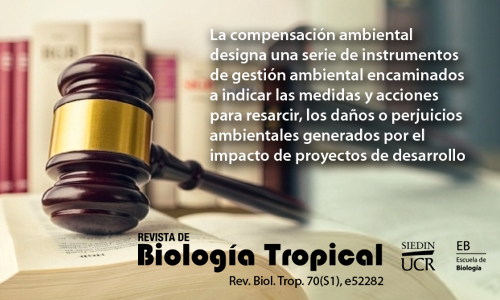Abstract
Introduction: Environmental compensation is a technical-legal instrument of environmental management used to offset damage due to non-reversible and unavoidable impacts. Usually, offset regulations are included in national environmental legislations. This paper summarizes environmental compensation legislation in Costa Rica, a country with a recognized conservation tradition and environmental awareness. Our goal is to describe how compensation is formulated in that country and identify possible regulations gaps.
Methods: We carried out a systematic review of environmental legislation through the Costa Rican Legal Information System (http://www.pgrweb.go.cr/scij/avanzada_pgr.aspx), considering both regulations and pronouncements on compensation measures and mitigation.
Results: The Political Constitution of Costa Rica recognizes a healthy environment as a fundamental right for all citizens. At least seven laws dealing with environmental issues and their respective regulations are currently enforced. This bulky legislation aims to protect natural resources by regulating their use and creating an assemblage of protected wild areas. However, the legislation is somewhat repetitive and open to interpretation, facilitating confusion. Actions requiring compensation are regulated in a general way, making it difficult to establish when and how to apply them. In addition, compensation is considered based on when the damage is identified and not on its level of environmental impact. Furthermore, the regulations do not make explicit the principles and goals that support the compensatory measures or how they should be carried out, briefly mentioning some actions that do not ensure that the net environmental loss is zero.
Conclusions: This review reveals the need to standardize the mechanisms to determine compensatory measures at the regulatory level, also analyzing the strategies that will be followed to ensure proportionality and ecological equivalence. The legislation must emphasize the importance of compensation as a positive practice, which must be incorporated within the guidelines of the Environmental Impact Study.



